This website primarily covers attractions in Dublin City and County. The “Further Afield” section is an introduction to selected attractions from four counties adjoining Dublin (Kildare, Louth, Meath and Wicklow).
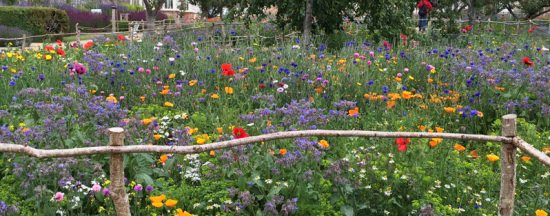

This website primarily covers attractions in Dublin City and County. The “Further Afield” section is an introduction to selected attractions from four counties adjoining Dublin (Kildare, Louth, Meath and Wicklow).
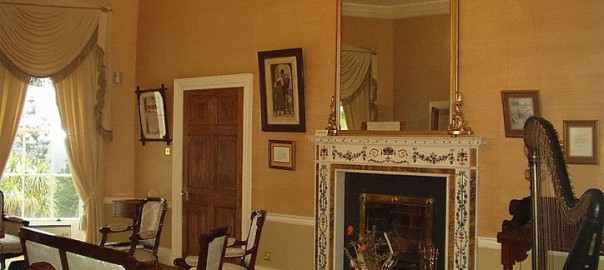
Avondale House in Rathdrum, County Wicklow, was the birthplace and home of Charles Stewart Parnell (1846-1891), one of the greatest political leaders in Irish history. The forest park that surrounds Avondale House is 214 hectares of magnificent parkland on the west bank of the Avonmore River. Avondale Forest Park has been the home of Irish Forestry since 1904. It was in Avondale that the first silvicultural experimental plots were laid out along the lines of a continental forest garden and today it has an extensive collection of trees and shrubs from around the globe.
The State purchased Avondale in 1904 and today the park has seven way-marked walks and trails. Avondale also hosts a permanent orienteering course. The Park is home to most of our common woodland animals including red squirrel, badger, hedgehog, stoat and fox. Rich bird life exists with over ninety species having been recorded here.
Avondale House was built in 1777 for Samuel Hayes. When he died in 1795 the house passed to the Parnell Family. It was at Avondale that Charles Stewart Parnell, one of the greatest political leaders of modern Irish history, was born in 1846. The house has been beautifully restored and functions as a museum to Parnell’s memory.
A major redevelopment project was completed in 2023 which included the addition of the Treetop Walk experience. This is a 1.4km wooden walkway that weaves through the forest and includes a viewing tower that climbs 38m above the forest floor. It also houses Ireland’s longest slide. Use of the slide is an optional extra, and due to demand, access cannot be guaranteed.
Opening Hours:
Opening days and times vary monthly, please consult the website for details.
Generally open 9am – 7pm, 7 days a week, during summer.
Guided tours of the house are available.
Contact & Pricing:
beyondthetreesavondale.com
enquiry@beyondthetreesavondale.com
Tel: 04 044 6111
Avondale Forest Park, Rathdrum, Co. Wicklow
Adults from €15 (plus €5 car park fee); concessions
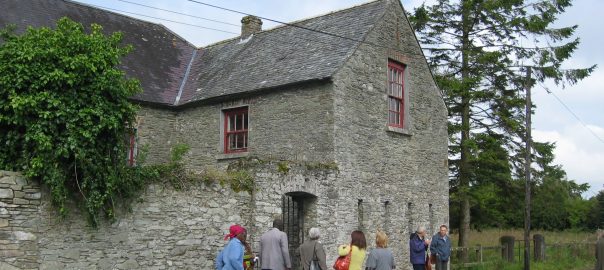
Ballitore Quaker Museum is housed in the restored Meeting House of the Society of Friends in Ballitore, Co. Kildare. Ballitore is a charming village founded by the Quakers in the 1700’s. The village still retains a spirit of simplicity and modesty consistent with Quaker values. Due to the writings of Mary Leadbeater and her correspondence with such people as Mary Edgeworth and Edmund Burke, Ballitore is widely known. The Quakers from Yorkshire, who founded Ballitore, transformed the valley into rich fertile farmlands, and developed the town as a Quaker Settlement. In fact, Ballitore is the only planned and permanent Quaker Settlement in Ireland.
Ballitore is home to several historical buildings. In 1975 the Meeting House of the Society of Friends which had fallen into ruin was restored by Kildare County Council and it has served as the library for the Ballitore area since then. The Museum, which is incorporated into the library, contains a selection of artefacts and memorabilia of a mainly local nature. Items of Quaker interest include a wedding dress and bonnet worn by Marian Richardson at Ballitore in 1853. In the entrance hall are the door and lintel stone from the original Shackleton home at Harden in Yorkshire which was built in 1660. Also in the entrance hall is a ledger dated 1807-1810 for the Shackleton mills at Lucan. Amongst the Ballitore manuscripts on display are Shackleton’s letters and notebooks, which contain water colours by Mary Shackleton and the Ballitore Magazine.
Opening Hours:
Wednesday, Friday, Saturday: 10am – 1pm & 2pm – 5pm
Thursday: 12.30pm – 4pm & 4.45pm – 8pm.
Contact & Pricing:
kildareheritage.com/ballitore
Tel: 059 862 3344
Mary Leadbetter House, Ballitore, Co. Kildare
Free admission
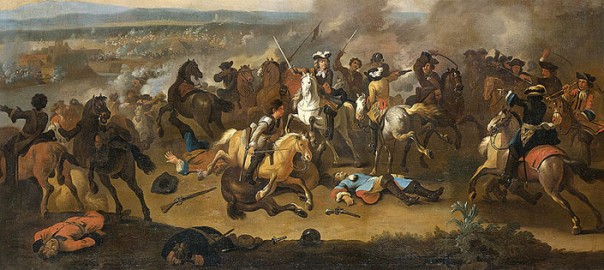
The Battle of the Boyne Visitor Centre is located in the recently restored 18th century Oldbridge House, which is on the battle site. The Battle of the Boyne between King William III and his father-in-law, King James II, was fought on 1 July 1690 (11 July according to our modern calendar).
Both kings commanded their armies in person. William had 36,000 men and James had 25,000 – the largest number of troops ever deployed on an Irish battlefield. English, Scottish, Dutch, Danes and Huguenots (French Protestants) made up William’s army (Williamites), while James’ men (Jacobites) were mainly Irish Catholics, reinforced by 6,500 French troops sent by King Louis XIV. At stake were the British throne, French dominance in Europe and religious power in Ireland.
William’s camp was on the north side of the river. James’s was on the south side with the two armies facing each other. William’s battle plan was to trap the Jacobite army in a pincer movement. He sent 10,000 men towards Slane which drew the bulk of the Jacobities upstream in response. With 1,300 Jacobites posted in Drogheda, only 6,000 were left at Oldbridge to confront 26,000 Williamites. All the fighting took place on the south side of the river, as the vastly outnumbered Jacobites defended their position against the advancing Williamites. William himself crossed at Drybridge with 3,500 mounted troops.
The pincer movement failed. King James’s army retreated across the River Nanny at Duleek and regrouped west of the Shannon to carry on the war. Approximately 1,500 soldiers were killed at the Boyne.
There is an admission fee to the House. There is free access to the battle site, to the parklands and to the formal gardens. One can also visit displays of original and replica 17th Century weaponry, exhibitions, an audiovisual programme, and a walled garden.
Oldbridge House was built in the 1740’s by either John Coddington or his nephew Dixie Coddington. It is believed to have been designed by George Darley, a local mason architect who also designed the renovated Dunboyne Castle, Dowth House and The Tholsel in Drogheda, Co. Louth. To the left of the house there is a cobble stone stable yard with fine cut stable block. This originally contained coach houses, stables, tack and feed rooms. To the right of the house is a small enclosed courtyard which contains the former butler’s house which is not open to the public.
The Victorian walled garden has been recently restored, along with a glasshouse and a unique sunken octagonal garden. There is a Garden Exhibition in the Bothy. The garden facilities are open daily all year round and admission is free.
Optional self guiding walks are available through the core battle site and Oldbridge Estate. The use of these walks is free of charge. Several orientation panels and maps are located at the start and access points to the walks.
Opening Hours:
Open May – Sept daily 10am – 5pm;
Check the website for opening hours outside of the summer period.
Car Park and Main Gate locked two hours after closing times.
Free admission to the grounds and Walled Garden.
Ticket includes Visitor Centre, Audio Visual Show, original and replica 17th Century weaponry displays, laser battlefield model, tea pavilion, walled garden and self-guided walks through parkland and battle site.
Closed from 24 Dec – Jan 2.
Please note that the Visitor Centre, Main Gates & Car Park may be closed due to weather conditions. Contact the Visitor Centre or check the website to confirm any unplanned closures.
Contact & Pricing:
battleoftheboyne.ie
battleoftheboyne@opw.ie
Tel: 041 980 9950
Oldbridge, Drogheda, Co. Meath
Adults €5; concessions
Free admission on the first Wednesday of every month.
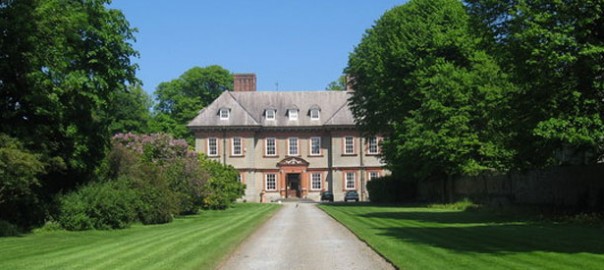
Beaulieu House and Gardens is an ancient estate overlooking the banks of the River Boyne, just over three miles from the town of Drogheda. For over 800 years the estate has been home to just two families, the Plunketts and the Tichbournes.
Originally the site of a Norman fortress, the Plunkett family first inhabited a motte and bailey and then a Jacobean house, the remains of which can be found in the fabric of the building you see today. No one knows where Beaulieu’s name originated, but the name can be seen on a 1650 map of the area.
The buildings at Beaulieu evolved over time from tower house to Jacobean building, finally being redesigned as a grand mansion in the English style by the Tichbourne family. As such, it is a rare example of late 17th century Irish domestic architecture which has survived without alterations. With the building of the house completed mainly between 1660-66, interior decorations, paintings, wood carvings and the grand staircase were the last of the improvements to be added (in 1723).
Four acres of historic walled garden and grassy terraces is situated close by. Family letters from the period tell us that exotic fruits, such as figs and nectarines were being grown by Sir Henry Tichbourne in the 1720s, much to his delight as he boasts about them to his half brother, Lord Molesworth. The same letters describe Sir Henry’s domestic improvements and his impatience with the builders, but he is especially proud of his new staircase (manufactured in Dublin and delivered by boat before the winter of 1723).
A painter and designer named William Van Der Hagen is associated with Beaulieu. Van Der Hagen began a painting career in Ireland around 1718 painting sets at the Dublin Theatre Royal, and went on to become the founding father of Irish landscape painting. Visiting Beaulieu is an opportunity to see some of his early work painted on panel, including a city scape of Drogheda and a spectacular ceiling painting attributed to him of the goddess Aurora descending from the heavens in her chariot.
Opening Hours:
Visits or tours of house and garden by appointment only.
Contact & Pricing:
beaulieuhouse.ie
beaulieu.house.garden@gmail.com
Tel: 041 983 8557
Beaulieu House, Drogheda, Co. Louth
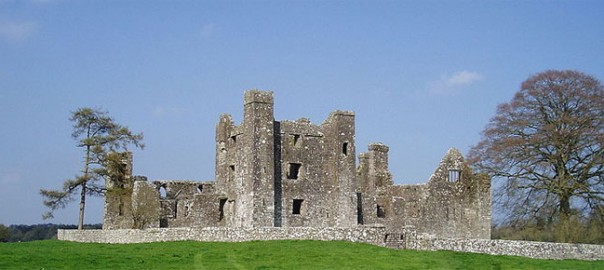
Bective Abbey was Ireland’s second Cistercian monastery, founded in 1147. The chief features of the ruins are the combined religious and defence elements. The cloister is quite well preserved and some beautiful arches are still intact.
Opening Hours:
Access to the site is available all year round.
Located 15 mins from Trim off the R161 (Navan Road).
Contact & Pricing:
discoverboynevalley.ie/bective-abbey
brunaboinne@opw.ie
Tel: 041 988 0300
Trim, Co. Meath
Free admission
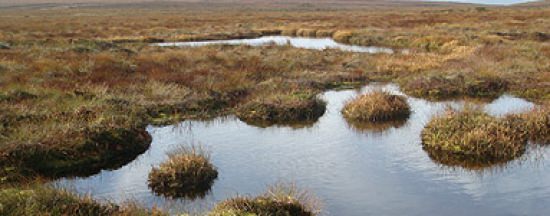
The Bog of Allen Nature Centre is an international centre for peatland education, conservation and research run by the Irish Peatland Conservation Council.
Explore the typical interior of a traditional Irish cottage, where the turf fire was the main source of heating and cooking in 19th century Ireland. See ancient treasures like bog butter, coins, the Great Irish Elk and an ancient dugout canoe, all recovered in an excellent state of preservation from the Bog of Allen.
Visit an exhibition celebrating the beauty of Irish boglands and their unique wildlife. Irish bogs have a valuable role in storing greenhouse gases and carbon, storing water, helping to control flooding, providing a refuge for plants and animals and providing spectacular places for recreation.
In the gardens at the Bog of Allen Nature Centre is a special feature called Flytraps, a greenhouse of insect eating plants which are found in bogs all over the world; it is the largest such collection in Ireland and Britain. You can see active insect trappers such as Sundews, Venus Fly Trap, Butterwort and Bladderwort. All these plants move to catch insect prey. You will also see passive fly trappers such as the Cobra Lily and Pitcher Plants (these plants use a range of tactics to lure insects to them, such as drugging them with “narcotic-enhanced” nectar).
The stages in the formation of a raised bog are shown in the gardens. See the reconstructed habitats of lake, fen and bog representing ten thousand years of history. Dip for mini-beasts in the wetland habitats and see sphagnum moss – the bog building plant that holds up to 20 times its own weight in water.
The wildlife conservation gardens at the Bog of Allen Nature Centre are situated on a one acre site to the rear of the centre. Work began on the gardens in 2004 with the aim of providing a refuge for biodiversity. The gardens are entirely peat free. Home-made compost is used to enrich the soil. The wild flower beds have been created to benefit insects. The gardens are managed without using pesticides, chemicals, peat based soil improvers or tap water. Pests such as snails are controlled by encouraging a healthy population of frogs and beetles.
Finish your day in the bog by visiting Lodge Bog, a living bog nature reserve in the Bog of Allen. Here you can find live sundews, feel the watery bog move and listen for the curlew calling. There is a boardwalk on the site and a seating area for you to take in all the sights and sounds.
Opening Hours:
Open all year, Mon to Fri: 9am – 5pm, last visit 4pm.
Special weekend openings from May to September, check events for details.
Not open Christmas or public holidays.
Contact & Pricing:
ipcc.ie
bogs@ipcc.ie
Tel: 045 860 133
Lullymore, Rathangan, Co. Kildare
Adults €5; concessions
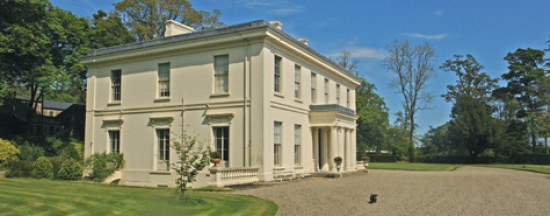
The Boyne Valley Garden Trail includes a number of historic gardens, smaller scale gardens and garden centres located within easy driving distance of each other in Counties Meath and Louth. A map can be consulted at boynevalleygardentrail.com
Each garden hosts different events, including walks, charity fetes, music events, outdoor theatre, exotic and rare plant sales and harvest festivals.
The locations listed include:
Balrath House and Courtyard, Navan, Co. Meath
Barmeath Castle, Dunleer, Co. Meath
Battle of the Boyne Visitors Centre, Oldbridge House, Drogheda, Co. Meath
Beaulieu House and Gardens, Drogheda, Co. Louth
Boyne Garden Centre, Ardcalf, Slane, Co. Meath
Bramley Cottage (Jane McCorkell’s Garden), The Rath, Killsallaghan, Co. Meath
College Hill House, Bryanstown, Slane, Co. Meath
Collon House, Ardee Street, Collon, Co. Louth
Forest Edge (no address given)
Francis Ledwidge Museum & Garden, Janeville, Slane, Co. Meath
Julianstown Village Garden, Julianstown Village, Co. Meath.
Kilgar Gardens, Kilgar House, Gallow, Kilcock, Co. Meath
Killineer House & Gardens, Drogheda, Co. Louth
Listoke House & Gardens, Drogheda, Co. Louth
Loughcrew House & Gardens, Oldcastle, Co. Meath
Ratoath Garden Centre, Ashbourne, Co. Meath
Riverlane Nurseries, Roristown Lodge, Trim, Co. Meath
Rokeby Hall, Dunleer, Co. Louth
Rosemount, Julianstown, Co. Meath
St. Mary’s Abbey, Abbey Lane, Trim, Co. Meath
Talbot Castle, Trim, Co. Meath
Tankardstown House, Rathkenny, Slane, Co. Meath
See full details about each location at:
boynevalleygardentrail.com
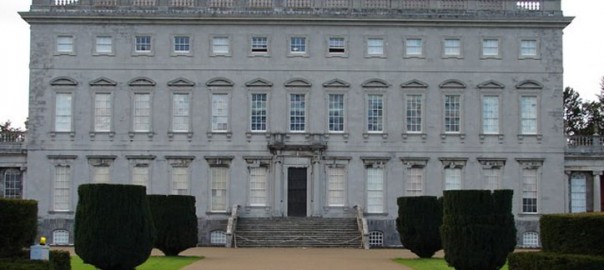
Castletown House is Ireland’s largest and earliest Palladian style house. It was built between 1722 and 1729 for William Conolly, the Speaker of the Irish House of Commons. The facade was designed by the Italian architect, Alessandro Galilei; Irish architect Sir Edward Lovett Pearce added the wings.
Castletown was built with two wings – connected by Ionic colonnades – flanking the Renaissance-inspired central block of the house. The wings contained the kitchens on one side and the stables on the other. This “Palladian” style originated in Italy with the 16th century architect Andrea Palladio (1508-80), and came to prominence in England in the early eighteenth century.
The house remained in the hands of William Conolly’s descendants until 1965. Its future became uncertain but it was saved in 1967 when (along with 120 acres of the demesne lands) it was purchased by the Hon. Desmond Guinness, founder of the Irish Georgian Society. The house was opened to the public and restoration work began, funded by the Irish Georgian Society and private benefactors. In 1994 the house was transferred to State care and is now managed by the Office of Public Works.
Through restoration, conservation, acquisition of parkland and development of visitor facilities, one of the most important houses in Ireland (and one of significance in terms of European architectural heritage) is being preserved for future generations.
Castletown, in the words of Kevin B. Nowlan, former Professor of Modern History, is an Italian palace set on the banks of the River Liffey.
At the time it was built, contemporary commentators expected it to be no less than ‘the epitome of the Kingdom, and all the rarities she can afford’. It is indeed not only the greatest of Irish houses, but also home to a significant collection of paintings, furnishings and objects, many associated with the house since the eighteenth century. This is extraordinary, considering that most contents from the house were dispersed at various auctions, the largest one held at Castletown over three days in April 1966. It explains why Castletown was considered a leading conservation and restoration project after the Hon. Desmond Guinness bought it in 1967 and, with the help of the Irish Georgian Society, opened it to the public.
Desmond Guinness himself had been able to acquire a significant number of original contents – including important family portraits, statues, furniture and the set of three Murano glass chandeliers – from Lord Conolly-Carew before the auction, which he then returned to Castletown. Over the years, many benefactors generously gave or loaned other important items, contributing to the exquisite collection on display today. Their generosity and kindness is acknowledged in the house and is recorded in Castletown: Decorative Arts, the detailed catalogue of our collection published in 2011.
Most items in the collection today belong to the Castletown Foundation, which between 1979 and 1994 owned and managed Castletown. When the house passed into state ownership, the collection was given on long-term loan to the Office of Public Works (OPW). In the more than two decades since, the OPW has been working closely with the Castletown Foundation on the presentation of the house and, together, they have secured additional items for the collection, both through purchase and generous loans. For example, in 2014 OPW identified, purchased and repatriated a pair of fine French corner cabinets which had been commissioned by Lady Louisa Conolly. They are now back in the Red Drawing Room where they used to be.
Access to the house is only by guided tour. The tour covers all aspects of the history of Castletown House from 1722 right up to the present day. The diverse and fascinating Conolly family members who lived in the house are explained, and visitors get a chance to view the fine architecture, original furniture and vast collection of paintings within Castletown. The House is available for school tours and private groups throughout the year; advance booking is essential.
The Berkeley Costume and Toy Collection is a fine collection of 18th and 19th century costumes, toys and dolls. Countess Ann Griffin Bernstorff, the Irish artist and collector, assembled the collection as a private enthusiasm. Covering a period of some 80 years from 1740–1820, the exhibits range from rare and delicate artefacts to simple and robust playthings, and everyday garments of the past, many of which were once owned by Irish families. The costumes are on view during one’s tour of the house; unfortunately, the toys have been moved to the second floor, which is not open to the public.
You can have a look at the highlights of the Castletown collection here – https://castletown.ie/collection-highlights/
Opening Hours:
The house opens daily until November; Tours run hourly from 10am until 4:30pm.
Access to the house is by guided tour only.
The restored 18th century Parklands are open to the public daily for free.
Access times vary, check here for details.
Contact & Pricing:
castletown.ie
castletown@opw.ie
Tel: 01 6288252.
Celbridge, Co. Kildare
Adults €10; concessions. Free on the first Wednesday of every month.
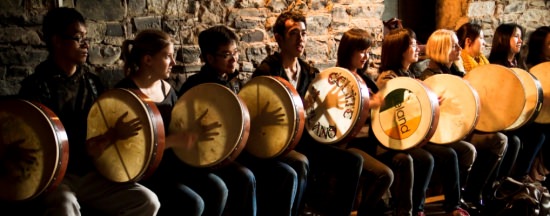
Causey Farm is a highly acclaimed venue for a variety of entertainment, tourism and educational programmes. The farm provides interactive cultural experiences in a friendly atmosphere for Irish and international groups, as well as seasonal events.
On their 300 acre farm, the Murtagh family breed Limousin-cross cattle, which they sell when the animals are around two years old. Their flock of Belclare ewes (an Irish breed famous for its high numbers of lambs) lamb in springtime; the lambs are sold, mainly to the French market, during the summer. The farm also produces winter wheat and spring barley, as well as curly kale, beet and turnips.
Causey Farm targets the school tours market, as well as corporate clients and international visitors (in groups). Typically, a group tour visit takes in a bodhrán workshop, a farmyard tour, céilí dancing, a trip to the bog & traditional turf cutting, a sheepdog demonstration, a nature walk and making your own soda bread. Definitely a 5-star experience for kids.
Tours are customised depending on the requirements of the group, so the price per individual can vary. Phone in advance to work out the package that suits you. Causey Farm also arranges popular hen party events, as well as hosting the chilling Halloween “Farmaphobia” extravaganza.
Farmaphobia is Ireland’s most horrifying Halloween Event. Journey through a frightful evening of screams and laughter… eerie corners, blood-curdling frights, ghoulish entertainers, heart-pounding, adrenaline pumping, life-threatening fear… your worst nightmares come true!
Opening Hours:
Causey is a working farm that is not generally open to the public, but runs seasonal events and private group experiences. These range from children’s summer camps to Hen Party packages.
Check the events calendar for details of current and upcoming events.
Their biggest public event the annual Farmaphobia Halloween Event, generally runs for the month of October. Tickets can be booked from mid-September, with prices varying depending on the booking.
Contact & Pricing:
causey.ie
info@causey.ie
Tel: 046 943 4135
Causey Farm, Girley, Fordstown, Navan, Co. Meath